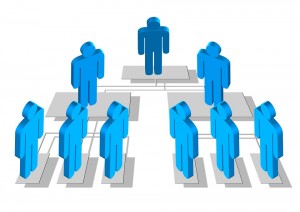Chosen as the Approved IT Staff Augmentation Vendor
Avant Garde has now been chosen as the approved IT Staff Augmentation Vendor for the following states:
- North Carolina approved vendor under ITS-009440
- Georgia approved vendor under SWC-70768
- Oregon approved vendor under statewide agreement #0483
- Colorado approved vendor
Learn more about IT opportunities (including subcontracting opportunities).
IT Staffing – How to Select the Right Staffing Firm for Your Business
As a rapidly expanding business, you will realize that your immediate priority revolves around building a strong foundation for your organization. Making the right hiring decisions is the crux to your business’ success and growth.
But how do you ensure that your hiring strategies are in alignment with your business goals?
It would be imprudent to consider that all recruitments are alike, irrespective of the functionality, skill requirement or role level. Similarly, it is unwise to opt for ‘any’ staffing solutions firm for your specialized requirements.
How then will you make the right choice as a hiring manager or top management executive to ascertain the right staffing firm for your organization’s needs?
Specialist Role, Specialized Needs
For roles that demand a rare skill set and expertise – like IT – it is important to engage with agencies that have the requisite sector or domain knowledge, and not with firms that offer general staffing services. In addition to sector expertise, it is important that the organization has strong network connections in the industry to source the right talent. It is also necessary that the firm you engage with offers knowledgeable recruiters who understand your business needs and provide solutions accordingly.
Proven Track Record
It is always advisable to approach a firm who has been in the business for a few years, and is well connected to the industry, since they would have a better understanding of your business operations and requirements. Firms that have been recognized with performance accolades and industry certifications for their solutions are a good choice. The clientele of the firm and their experiences can also help you to filter out the right staffing partner for your needs.
Flexibility and Agility
Getting onboard an IT staffing firm where you can connect with experts in the field will help you to leverage cross-functional IT expertise, while ensuring that you don’t miss out on any candidates due to lack of domain knowledge. Flexibility and agility of the hiring personnel to meet your requirements within the timeline provides your business a competitive edge.
Process and Timelines
Before you finalize a staffing firm, it is essential to ask certain questions regarding the process they employ to get the best options for you, the approximate number of candidate options expected for the particular vacancy, and the turnaround time. If the answers sound too good to be true, it may be possible that the firm does not have the necessary expertise in your domain. So stay alert for such mismatches.
Avant Garde provides expert IT staffing services customized to meet your business needs. Conta ct us to learn more.
ct us to learn more.
